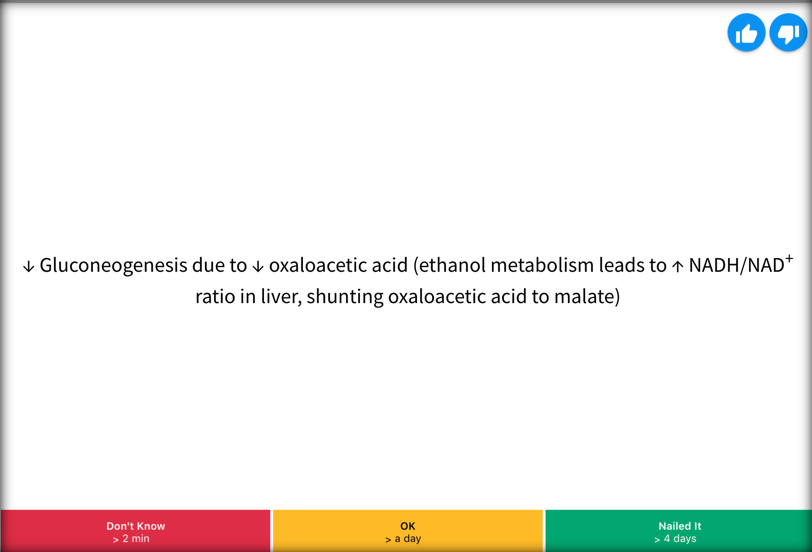As part of our ongoing quest to help med students study more efficiently, we released an updated version of Study Stream today. Based on extensive user research and good old-fashioned number-crunching, our data science team has fine-tuned our spaced repetition algorithm and adjusted the user interface so that the system provides a better overall learning experience.
So, what’s changed?
Interface
- First off, we have replaced the label on the yellow confidence interval so that it now says OK instead of Unsure.

- We found that users weren’t always clear about when to use the yellow option and were often selecting it because they weren’t ready to declare that they had nailed that fact. By changing this to OK, you’re signaling that you know it at this moment, but don’t believe you’ve Nailed It.
Algorithm
- We have also adjusted the algorithm so that you can make better forward progress on cards you’ve rated as OK or Nailed It.
- Formerly, cards rated as Unsure (in yellow) would come back in a few minutes. Now, when you mark a card OK, you won’t see it for about a day. As noted above, this reflects a positive interaction.
- If you select OK the next time you see the card, it will push the card out by roughly 6 days. After that, selecting OK will push it out by about 14 days. The idea is that you’re continuing to demonstrate that you understand the material and are getting it right each time. This also means that you’re less and less likely to forget it, even if you’re still hesitant to say that you have it mastered.

- We have also expanded the time intervals for cards that you’ve rated as Nailed It (which is the green option). Users told us that they don’t expect to see these cards as frequently, so we’ve extended the first interval to 4 days. This allows Study Stream to confirm that the user isn’t overconfident about a card they see for the first time, especially if it’s information that they’ve recently learned.
- After rating a card as Nailed It a second time, the return interval is extended to roughly 12 days, and widens further each time thereafter (again based on the principles of the forgetting curve).
- If, at any point, you rate a card as Don’t Know (the red option), the card will reset and be presented to you again in about 2 minutes. Even if you’ve consistently rated a card Nailed It for a year, selecting Don’t Know will reset the card back to the original baseline.
- The system remembers all of your previous interactions with each card. This history will inform your card progression, so that future intervals may be shorter or longer based on your prior performance, even if you reset it.
Flash Facts
- Cards that were previously rated in a Flash Facts deck don’t impact the Study Stream algorithm. However, as you go through Study Stream, you may see previous ratings of cards you’ve encountered in Flash Facts.
Today’s Goal
- The “Total Cards in Stream” figure may be different than your previous number. This number originally only displayed the cards in the stream for the next week, whereas now it displays the total number of cards associated with all of the First Aid topics you have selected.
Study Stream has always been designed to help you remove the guesswork from learning the key facts of the preclinical curriculum. With these optimizations, you can focus more attention on the facts you need to cover, while reviewing those that you’ve already learned before you forget them.
For more information, find us here: https://usmle-rx.zendesk.com/hc/en-us



Pingback: kissanime.digital
Pingback: pasarqq
Pingback: Sporting Events
Pingback: m? th?y ?ánh nhau ch?t ng??i
Pingback: special gummy bears
Pingback: n?m m? th?y cá lóc ?ánh s? m?y
Pingback: m? th?y tàu h?a
Pingback: n?m m? th?y mua nhà
Pingback: m? th?y em trai ch?t
Pingback: Regression testing
Pingback: m? th?y chim b? câu ?ánh con gì
Pingback: mejaqq